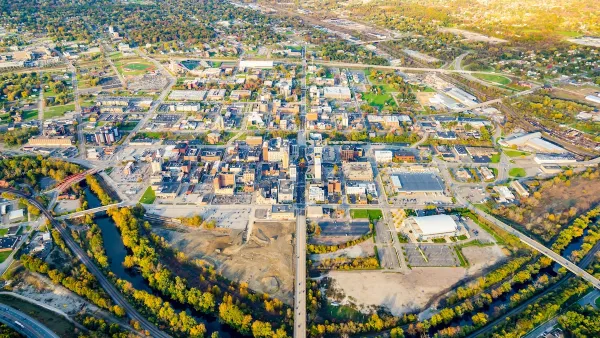Faced with a national housing crisis, it's time for cities to stop letting social mores dictate who can live where.
In Slate, Henry Grabar chronicles the demise of a co-op in Boulder that symbolized a conflict between young adults trying to make ends meet and "the old guard—slow-growth homeowners who moved here decades ago."
In many cities across the United States, groups of friends and acquaintances who can't afford to rent or buy homes on their own are moving into houses together, Grabar writes:
High rents and the limits of the housing stock have forced tenants—a generation of young people and immigrants—into larger, underused homes ill-suited (or too expensive) for America’s shrinking families.
But this common living arrangement is illegal in many cities under occupancy laws limiting the number of unrelated adults who can live together.
By targeting the legal relationship of cohabitants instead of their living conditions, Grabar notes, such ordinances don't protect safety but rather police personal relationships through a particular definition of legal terms like "family" and "household."
"Distinct from overcrowding laws that regulate the amount of space per person, the occupancy law is a widespread modern policy of social preference, not of public health or safety," he writes.
While advocacy has convinced Boulder to begin reconsidering its approach to co-ops, Grabar urges that other adaptations to the housing market that are not university town trends not be thrown under the bus.
Legalizing co-ops won’t do much for the city’s other illegal tenants, especially if it’s part of a bargain that renews enforcement on other illegally occupied residences.
FULL STORY: Full House

National Parks Layoffs Will Cause Communities to Lose Billions
Thousands of essential park workers were laid off this week, just before the busy spring break season.

Retro-silient?: America’s First “Eco-burb,” The Woodlands Turns 50
A master-planned community north of Houston offers lessons on green infrastructure and resilient design, but falls short of its founder’s lofty affordability and walkability goals.

Delivering for America Plan Will Downgrade Mail Service in at Least 49.5 Percent of Zip Codes
Republican and Democrat lawmakers criticize the plan for its disproportionate negative impact on rural communities.

Test News Post 1
This is a summary

Test News Headline 46
Test for the image on the front page.

Balancing Bombs and Butterflies: How the National Guard Protects a Rare Species
The National Guard at Fort Indiantown Gap uses GIS technology and land management strategies to balance military training with conservation efforts, ensuring the survival of the rare eastern regal fritillary butterfly.
Urban Design for Planners 1: Software Tools
This six-course series explores essential urban design concepts using open source software and equips planners with the tools they need to participate fully in the urban design process.
Planning for Universal Design
Learn the tools for implementing Universal Design in planning regulations.
EMC Planning Group, Inc.
Planetizen
Planetizen
Mpact (formerly Rail~Volution)
Great Falls Development Authority, Inc.
HUDs Office of Policy Development and Research
NYU Wagner Graduate School of Public Service





























